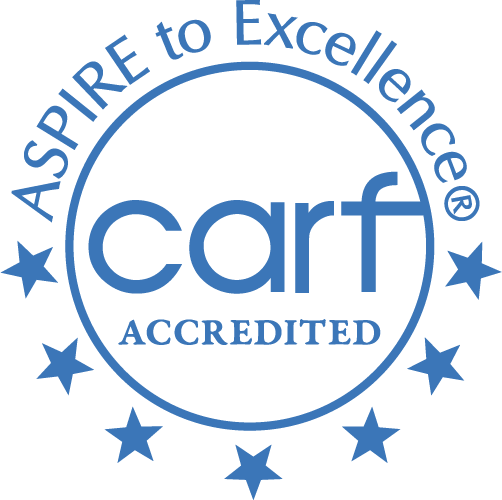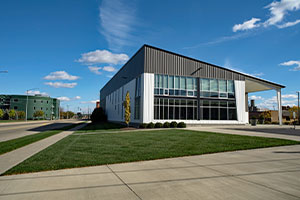Skip To Rehab Listing
With substance abuse treatment readily available, those struggling with addiction can get support within their local area.
Addiction Treatment Service Settings and Treatment Techniques In Vineland, NJ.
The types of rehabilitation programs in Vineland can include the following: inpatient drug and alcohol rehab facilities, long term drug addiction treatment, detoxification programs, intensive outpatient treatment, short term drug treatment.
Individuals seeking treatment can find conveniently located centers nearby with a range of rehab methods made for successful rehabilitation. These methods, which contain both traditional and recently developed approaches, include the following: 12-step facilitation approach, rational emotive behavioral therapy, vocational rehabilitation services, brief intervention approach, trauma-related counseling, relapse prevention.
Programs Addressing Special Requirements for Alcohol and Drug Treatment
Alcohol and drug addiction can vary based upon factors, like the type of substance causing the addiction. Many rehabilitation programs in the Vineland area offer rehabs aimed to tailor rehab to a patient's specific needs. These rehabs include the following: persons with serious mental illness, domestic violence, persons with eating disorders, seniors or older adults, active duty military, social skills development.
Clients who are not sure what their requirements are can contact these centers to access patient programs that can lead them toward the proper program.
Paying For Recovery - Payment Options & Alternatives
People struggling with alcohol and drug dependency come from different financial circumstances, but a variety of funding alternatives makes rehabilitation financially accessible for anyone. Financing opportunities include the following: private pay, private medical insurance, medicaid, medicare, military insurance, other state funds, state welfare or child and family services funds.
Those seeking treatment can contact a rehab center to learn more about what payment opportunities are available to them.
Vineland, New Jersey's alcohol and drug centers, services, and payment options offer those struggling with drug and alcohol addiction an opportunity to start a lasting sobriety plan.
Commonly Asked Questions about Addiction and Treatment
Should I stay close to my home or go away to treat my addiction?
The decision of whether to stay close to home or go away for addiction treatment depends on various individual factors and personal preferences. Each option has its own set of advantages and potential drawbacks. Here are some points to consider when making your decision:
Advantages of staying close to home:
- Familiar environment: Staying close to home allows you to remain in a familiar environment, which can provide comfort and reduce stress during the initial stages of recovery.
- Support network: Being near friends and family members can offer emotional support, encouragement, and motivation throughout the treatment process.
- Accessibility: Local treatment options may be more accessible and affordable, especially if transportation and travel costs are a concern.
- Continuity of care: Staying close to home may facilitate a smoother transition to aftercare services and ongoing support within your community.
Potential drawbacks of staying close to home:
- Triggers and temptations: Staying near home may expose you to environmental triggers and temptations that could increase the risk of relapse.
- Limited treatment options: Your local area may not offer the specific treatment programs or services that are best suited to your individual needs.
Advantages of going away for treatment:
- Fresh start: Traveling to a new location can provide a sense of starting fresh and allow for greater focus on your recovery journey.
- Distance from triggers: Being away from familiar surroundings may help minimize exposure to triggers and reduce the temptation to use substances.
- Specialized treatment options: Going away for treatment may provide access to specialized programs or services that are not available in your local area.
- Privacy and anonymity: Attending treatment in a different location can offer greater privacy and anonymity, which may be important for some individuals.
Potential drawbacks of going away for treatment:
- Limited support network: Being away from friends and family might make it challenging to receive emotional support during the recovery process.
- Increased costs: Traveling for treatment may involve additional expenses, such as transportation and accommodations.
- Transition to aftercare: Returning to your home community after treatment might make it more difficult to access aftercare services or continue with the same support network.
How long does it take for the treatment of drug addiction?
"The duration of treatment for drug addiction can vary significantly depending on several factors, including the individual's unique needs, the severity and type of addiction, and the chosen treatment approach. There is no universally prescribed timeline for addiction treatment, as each person's journey to recovery is different. However, some general timeframes can be considered when discussing drug addiction treatment:
Detoxification: The initial detoxification process, during which the body clears itself of drugs and toxins, can range from a few days to several weeks, depending on the substance involved and the individual's physiological response.
Inpatient or residential treatment: Inpatient or residential treatment programs, which provide intensive, structured care in a controlled environment, typically last between 28 days and 90 days. However, some individuals may require extended stays of six months or longer, depending on their progress and specific needs.
Outpatient treatment: Outpatient treatment programs, which offer therapy and support while allowing individuals to continue living at home, can vary in duration and intensity. Some programs may last for several weeks or months, while others may continue for a year or more, with sessions becoming less frequent over time as the individual progresses in their recovery.
Aftercare and ongoing support: Recovery from addiction is a lifelong process, and ongoing aftercare and support are crucial for maintaining long-term sobriety. Aftercare may include continuing therapy, attending support group meetings, or participating in sober living communities. The duration of aftercare and ongoing support can vary based on individual needs and may continue indefinitely.
Research suggests that longer durations of treatment are generally more effective in promoting lasting recovery. The National Institute on Drug Abuse (NIDA) recommends a minimum of 90 days of treatment for most individuals, as shorter durations have been associated with higher relapse rates. However, it is essential to recognize that each person's path to recovery is unique, and the most effective treatment plans are tailored to their specific needs, goals, and circumstances."
What are the symptoms of opioid addiction?
Opioid addiction is a chronic condition characterized by compulsive use of opioids despite harmful consequences. Recognizing the symptoms of opioid addiction can help in providing timely intervention and support for the affected individual. Some common symptoms of opioid addiction include:
- Physical symptoms: Opioid addiction can cause various physical symptoms, such as constricted pupils, drowsiness, slowed breathing, constipation, and itching. The person may also exhibit signs of intoxication, like slurred speech and impaired coordination.
- Behavioral changes: Opioid addiction can lead to changes in behavior, such as increased secrecy, social withdrawal, mood swings, and unexplained absences. The person may neglect personal hygiene, appearance, or responsibilities in favor of obtaining and using opioids.
- Tolerance and withdrawal: Over time, individuals with opioid addiction may develop a tolerance, requiring higher doses or more frequent use to achieve the desired effects. If the person stops using opioids, they may experience withdrawal symptoms, such as restlessness, muscle and bone pain, insomnia, diarrhea, vomiting, and cold flashes with goosebumps.
- Loss of control: A key symptom of opioid addiction is the inability to control opioid use, even when the person wants to stop. They may spend an excessive amount of time and resources obtaining, using, or recovering from the effects of opioids.
- Continued use despite negative consequences: Individuals with opioid addiction often continue using opioids despite experiencing negative consequences, such as health problems, relationship issues, financial difficulties, or legal troubles.
- Preoccupation with opioids: Opioid addiction can lead to a preoccupation with the drug, resulting in the person prioritizing opioid use over other aspects of their life, including personal relationships, work, or hobbies.
- Risk-taking behaviors: Opioid addiction can lead to increased risk-taking behaviors, such as using opioids in dangerous situations, sharing needles, or engaging in criminal activities to obtain the drug.
- Neglecting relationships: Opioid addiction can strain personal relationships, as the person may prioritize their opioid use over their connections with friends and family.
- Changes in sleep patterns: Opioid use can disrupt sleep patterns, causing the person to experience insomnia or excessive sleepiness.
- Cravings: Individuals with opioid addiction may experience strong cravings for opioids, often leading to compulsive drug-seeking behaviors.













